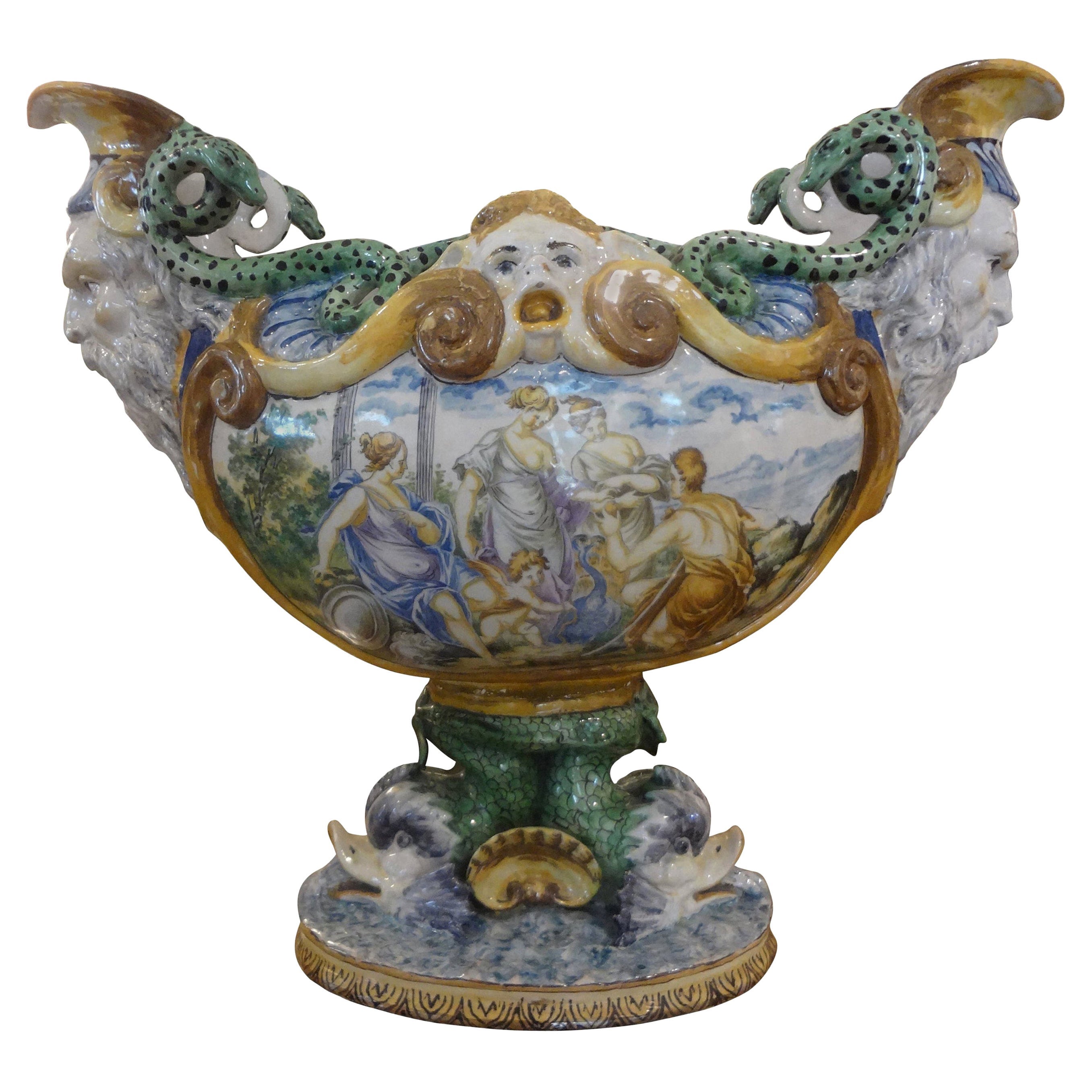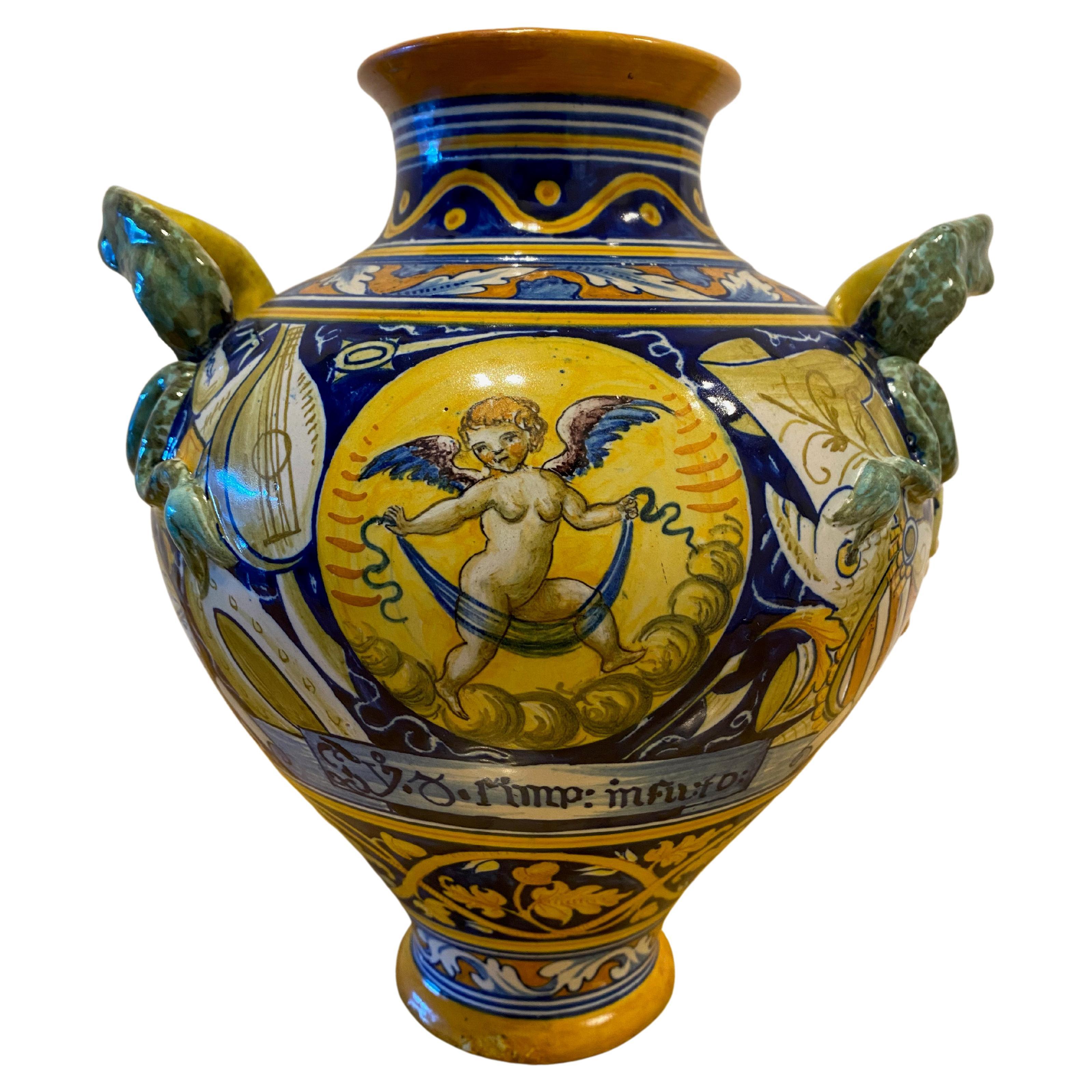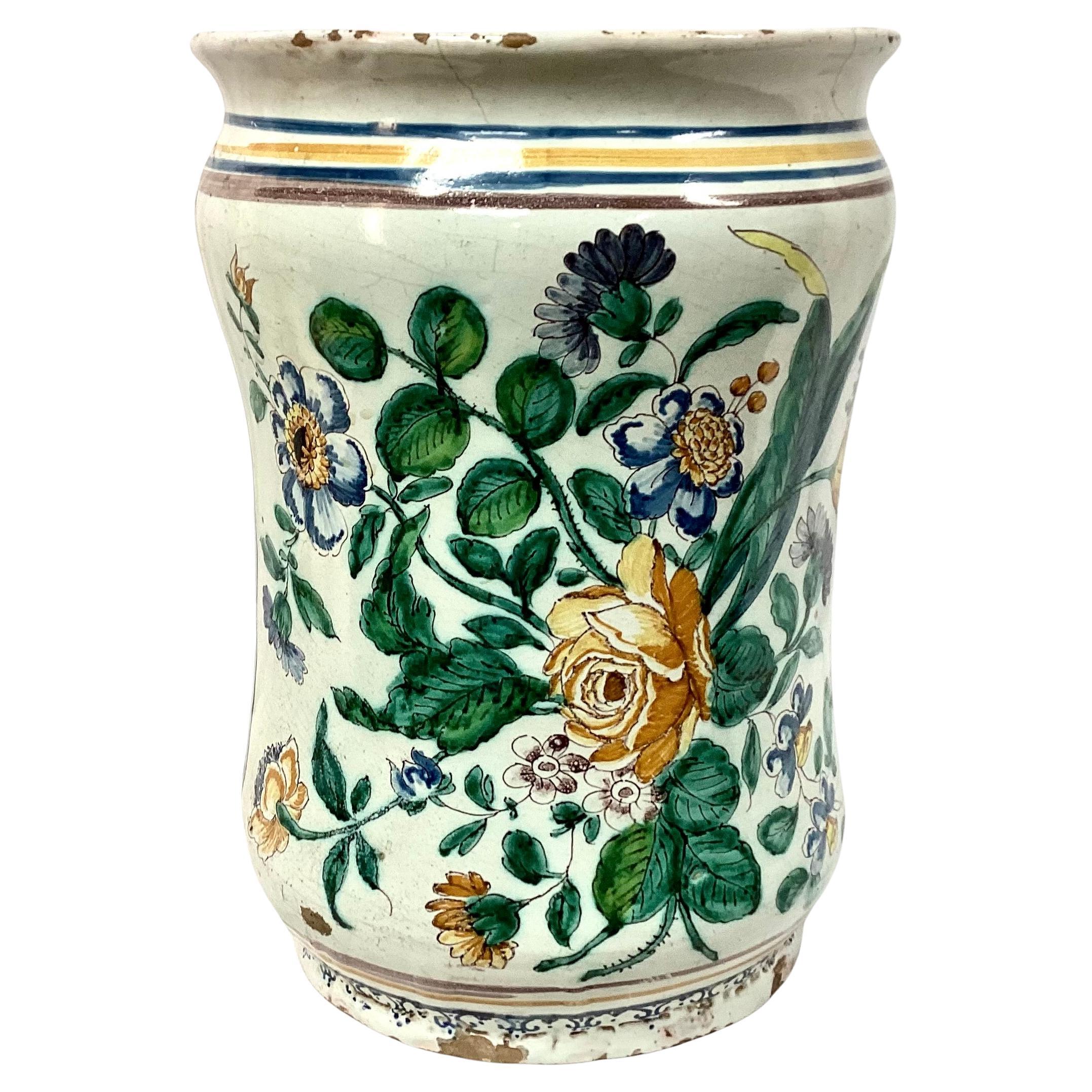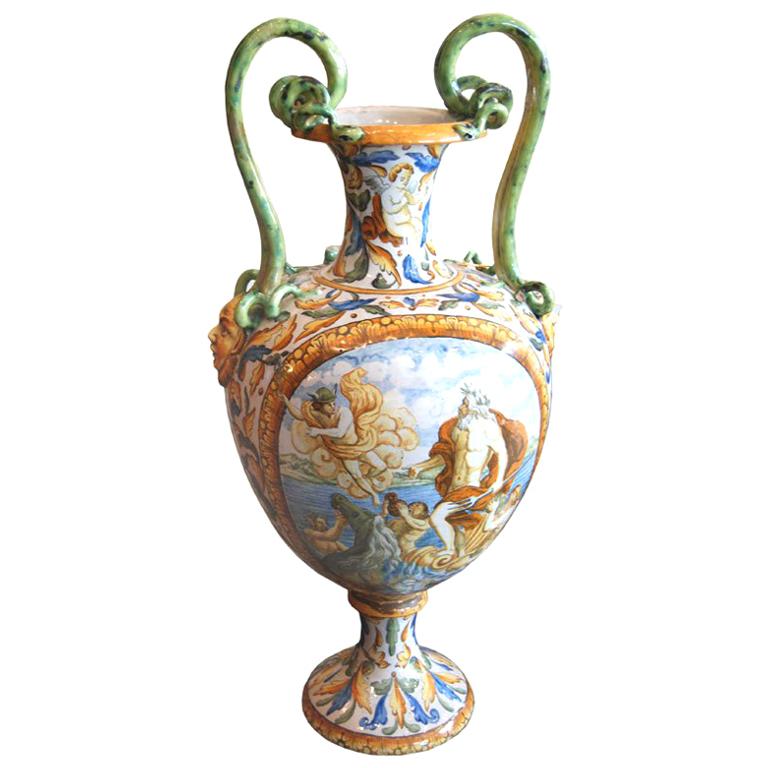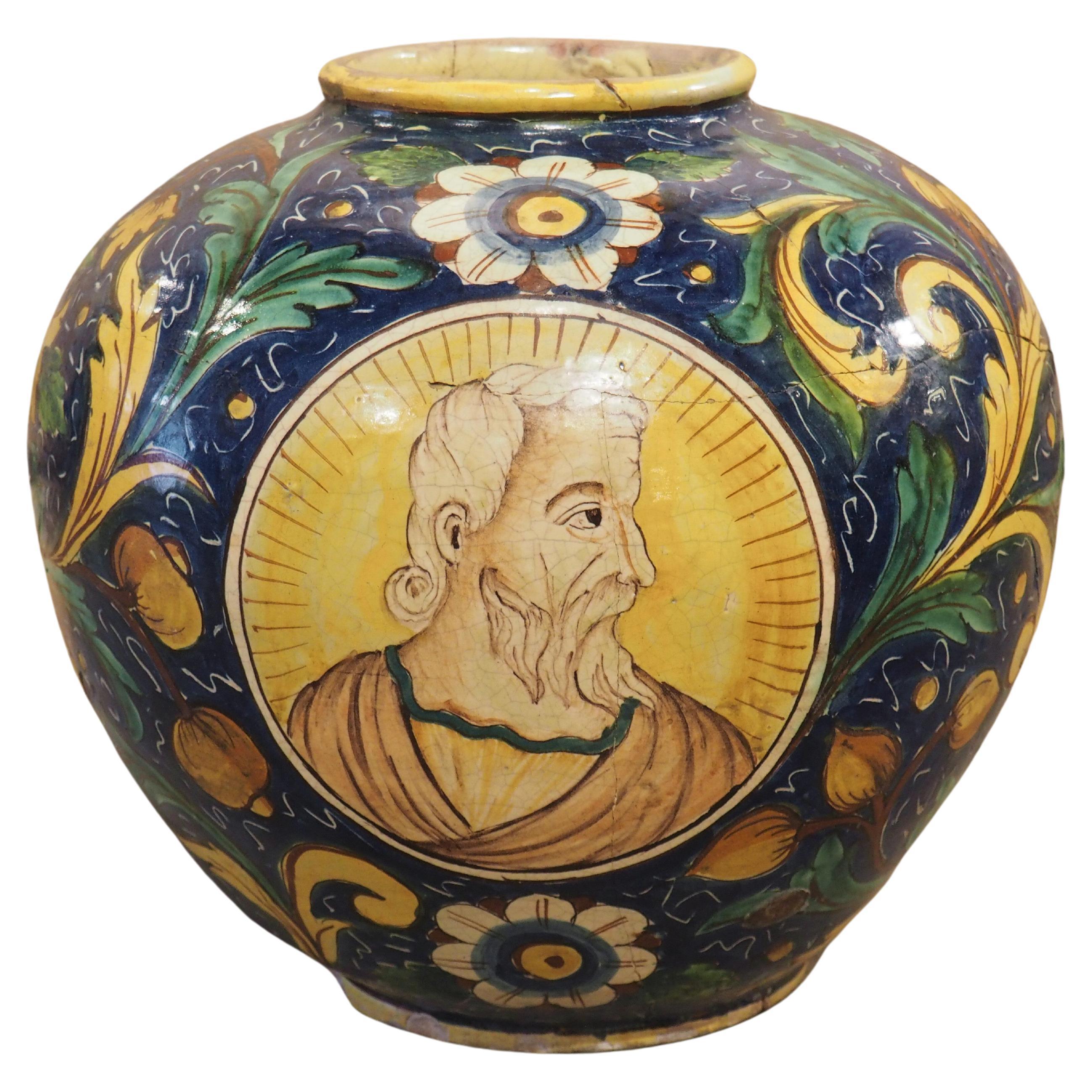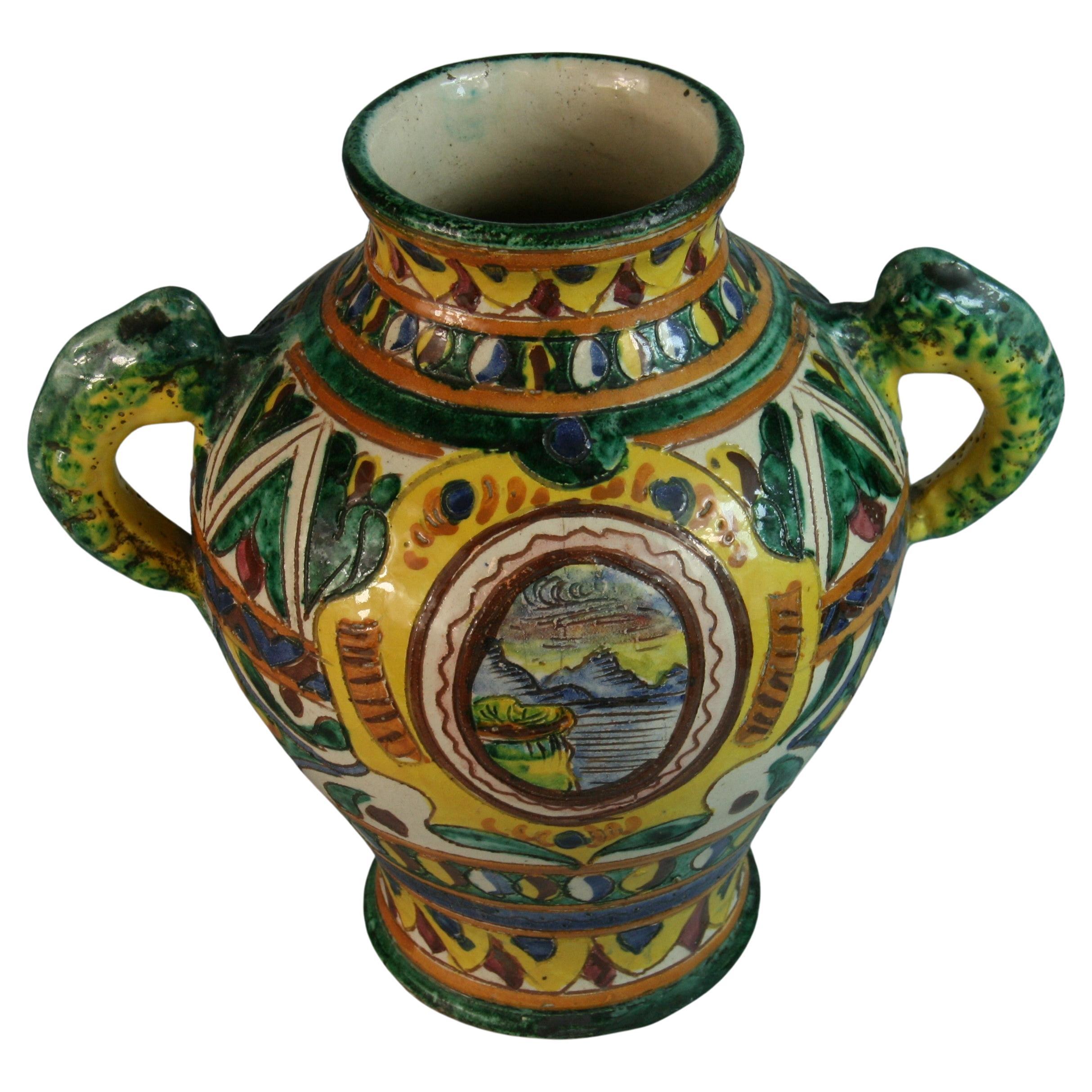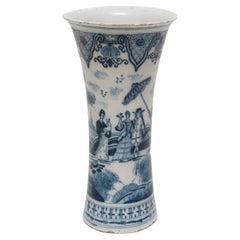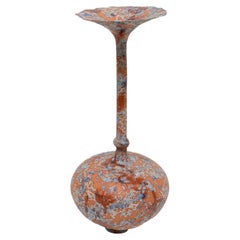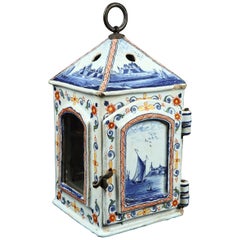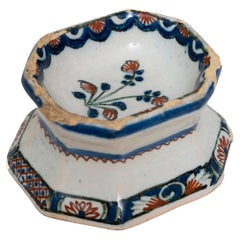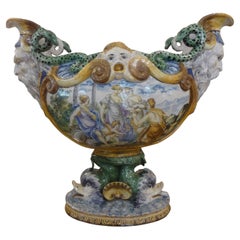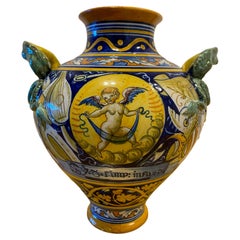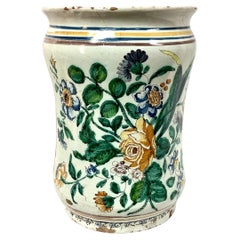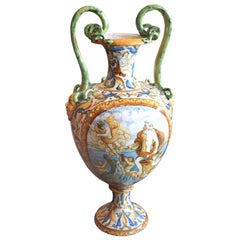Items Similar to Urn Planter Flower Majolica Renaissance Italian Roman Charity Cimon Pero
Want more images or videos?
Request additional images or videos from the seller
1 of 6
Urn Planter Flower Majolica Renaissance Italian Roman Charity Cimon Pero
$3,425.42
£2,500
€2,916.12
CA$4,691.96
A$5,218.49
CHF 2,724.93
MX$63,503.46
NOK 34,801.55
SEK 32,637.71
DKK 21,764.09
Shipping
Retrieving quote...The 1stDibs Promise:
Authenticity Guarantee,
Money-Back Guarantee,
24-Hour Cancellation
About the Item
- This stunning, massive, flower vase is a wonderful statement and conversation piece.
- It is beautifully thrown and painted by one of Italy's leading family potteries.
- Roman Charity is history’s most altruistic legend of honoring your parent.
- Versatile and looks fabulous, whether filled with flowers or plants or not, in any spot, the fireplace, in a corner, on a table.
A large Italian Faïence majolica two-handled jar decorated by D. Leoncini, with a depiction Roman Charity in which Pero who secretly breastfeeds her father Cimon who was starving to death in prison.
The selfless devotion of Pero to nourish her father Cimon at her own breast is called “Roman Charity”. The kindness of Pero towards her starving father in prison depicts one of the Corporal works of mercy — “To feed the hungry.” Corporal works of mercy are given by Jesus in Chapter 25 of the Gospel of Matthew. This story of Pero and Cimon is registered in Factorum ac dictorum memorabilium by an ancient Roman historian Valerius Maximus. It is believed in the Romans that this story is related to the mythological story of Juno’s breastfeeding of the adult Hercules. Throughout time paintings, writings, novel and more recently movies have depicted Roman Charity in one form or another. The wall frescoes and paintings excavated from Pompeii revealed the visual representations of Pero and Cimon and artists such as Carravagio & Rubens also popularized this visual language.
One of the most important families in the medieval town of San Gimignano, the pottery of Leoncini has for generations practiced with the wisdom and expertise of the old ceramic masters recreating ancient designs with skill, great care and ability.
Provenance: Private Collection, by descent, acquired on a Grand Tour of Italy
Measures: Height 38cm
Diameter 55cm.
- Dimensions:Height: 14.97 in (38 cm)Diameter: 21.66 in (55 cm)
- Style:Renaissance Revival (Of the Period)
- Materials and Techniques:
- Place of Origin:
- Period:
- Date of Manufacture:circa 1960
- Condition:Wear consistent with age and use.
- Seller Location:BUNGAY, GB
- Reference Number:1stDibs: LU3867321867812
About the Seller
5.0
Vetted Professional Seller
Every seller passes strict standards for authenticity and reliability
Established in 1985
1stDibs seller since 2018
97 sales on 1stDibs
Typical response time: 7 hours
- ShippingRetrieving quote...Shipping from: BUNGAY, United Kingdom
- Return Policy
Authenticity Guarantee
In the unlikely event there’s an issue with an item’s authenticity, contact us within 1 year for a full refund. DetailsMoney-Back Guarantee
If your item is not as described, is damaged in transit, or does not arrive, contact us within 7 days for a full refund. Details24-Hour Cancellation
You have a 24-hour grace period in which to reconsider your purchase, with no questions asked.Vetted Professional Sellers
Our world-class sellers must adhere to strict standards for service and quality, maintaining the integrity of our listings.Price-Match Guarantee
If you find that a seller listed the same item for a lower price elsewhere, we’ll match it.Trusted Global Delivery
Our best-in-class carrier network provides specialized shipping options worldwide, including custom delivery.More From This Seller
View AllVase Delftware Dutch Blue and White
Located in BUNGAY, SUFFOLK
Unusual decoration blending a European pastoral landscape with Chinoiserie ornamentation. Suitable for everyday use.
The tapering body decorated with a European lady and a gentlem...
Category
Antique 18th Century Dutch Chinoiserie Delft and Faience
Materials
Earthenware
Vase Sculpture Pottery Glazed 46cm 18" high teraccotta blue
Located in BUNGAY, SUFFOLK
Striking, sculptural ceramic piece
Technically complex to make a piece of this form
The delicate, slender neck and thin, pie crust top seemingly float and balance with the circular...
Category
20th Century English Mid-Century Modern Pottery
Materials
Pottery
Lantern, Delftware, mid-18th Century, Dutch, Polychrome, Tryhoorn Collection
Located in BUNGAY, SUFFOLK
This charming lantern decorated with typical Dutch estuary scenes is a rare survival. Although they must have been made in large quantities as evidenced in many Dutch Old Masters th...
Category
Antique Mid-18th Century Dutch Baroque Delft and Faience
Materials
Earthenware
Salt Cellar Faience French Octagonal Blue Red Green White
Located in BUNGAY, SUFFOLK
A charming piece of history for the dining table.
The inside with an elegant, central floral spray and a floral border. the base decorated with blue lines and a bottom border of s...
Category
Antique 18th Century French Chinoiserie Delft and Faience
Materials
Faience
Ewers Jugs Vases Terracotta Glazed Pair Canakkale Ottoman Green Ochre Gilded
Located in BUNGAY, SUFFOLK
Fine, pair of 19th century, ottoman revival, canakkale, green and ochre, gilded and moulded, terracotta ewers
- Characteristic of the unique Canakkale Ottoman Revival style in for...
Category
Antique Mid-19th Century Turkish Islamic Pottery
Materials
Terracotta
vase Cobridge summer meadow limited edition 28/250 daisy's 10" high
Located in BUNGAY, SUFFOLK
COBRIDGE SUMMER MEADOW, LIMITED EDITION VASE, MARKED 28/250 UNDERNEATH, 1999, 10” high
Delicate, injecting the beauty and lightness of summer meadows into the interior
Great perspect...
Category
1990s English Ceramics
Materials
Stoneware
You May Also Like
Early 20th Century Italian Majolica Urn
Located in Houston, TX
Early 20th century Italian majolica urn. This gorgeous Italian majolica or maiolica urn or jardiniere is hand decorated with serpents, dolphins an...
Category
Early 20th Century Italian Neoclassical Urns
Materials
Ceramic, Maiolica, Majolica
Italian Cantagalli Polychrome Majolica Vase, Late 19th Century
By Cantagalli
Located in CH
Italian Cantagalli polychrome majolica vase, late 19th century
During the 19th century Renaissance-Revival period the Cantagalli Majolica and ce...
Category
Antique Late 19th Century Italian Renaissance Revival Vases
Materials
Faience
Italian Majolica Pharmacy Jar
Located in Bradenton, FL
Late 18th century Italian Majolica Polychrome Pharmacy Jar or Albarello, dated 1777. These jars were use in apothecaries to hold medicinal herbs, powders...
Category
Antique Late 18th Century Italian Classical Roman Jars
Materials
Majolica
19th c. Italian Majolica Urn
Located in New Orleans, LA
Beautifully Decorated Majolica Urn
Category
Antique 19th Century Italian Vases
Materials
Ceramic
Antique 19th Century Italian Maiolica Pot of the Renaissance Style
Located in Dallas, TX
Vivid colors, hand-painted in the Renaissance style, enhance this large maiolica pot from the 1800’s. Maiolica is tin-glazed pottery from Italy that has been decorated over a white background. This pot is considered an istoriato, which is to say that the pot has been decorated with figures, rather than strictly geometric patterns or floral designs.
The maiolica does incorporate floral and foliate motifs, with white flowers that have yellow centers surrounded by blue rings. There are also yellow flowers that are depicted in various stages of nyctinasty (the closing of flowers during the night). The flora is all connected by a series of green and yellow curled leaves. Behind the vegetation is a dark blue background. There are two portraits inside large yellow cartouches that are painted in the middle of the pot. The first is a bearded man, dressed in a light brown tunic...
Category
Antique 19th Century Italian Renaissance Vases
Materials
Maiolica
Sicilian Majolica Urn
Located in Douglas Manor, NY
1651 Sicilian incised and hand painted urn
Category
Vintage 1950s Urns
Materials
Terracotta
More Ways To Browse
Vintage Italian Urn
Roman Urn
Ancient Roman Vase
Large Black Urn
Large Italian Urns
Ancient Urn
Italian Majolica Vase
Painting Of Urn
Large Majolica Vases
Hand Painted Italian Urn
Renaissance Majolica
Ceramic Urn Handles
Large Ceramic Urn Vase
Majolica Vase Handles
Large Hand Thrown Pottery
Grand Tour Urn
Vintage Italian Majolica Pottery
Majolica Plant
